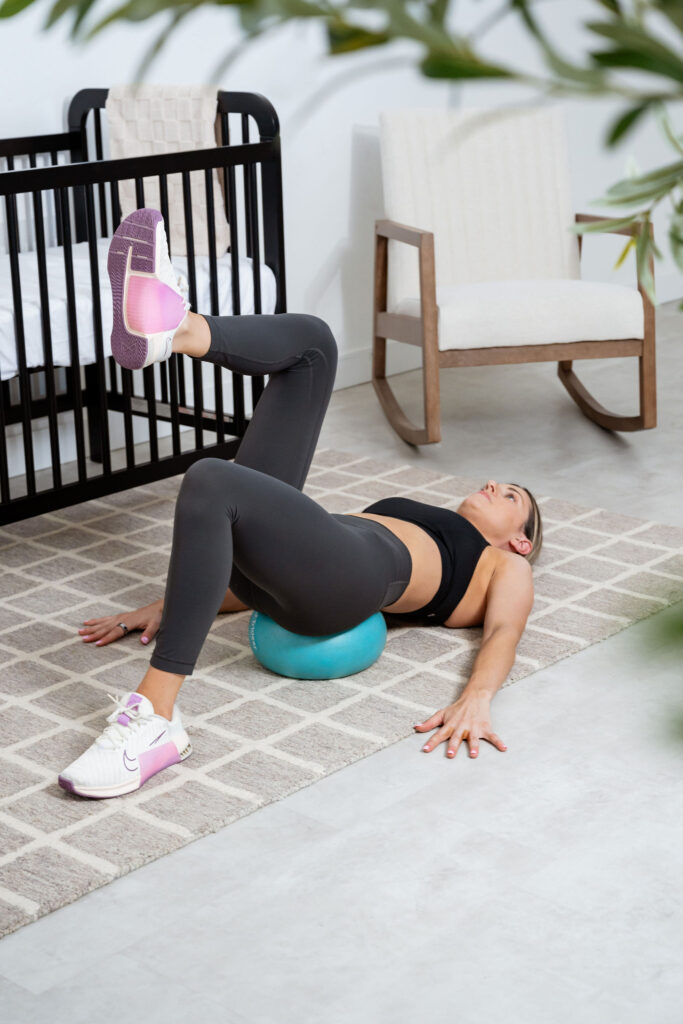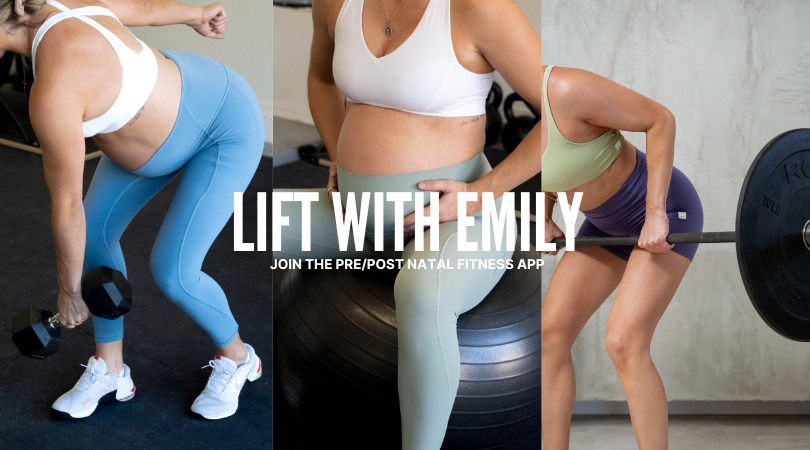
After birth, your core may feel disconnected, weak, or just… different. That’s completely normal. Pregnancy and delivery (no matter the type) change how your body functions – especially your breathing, posture, and core activation.
Core rehab often feels complicated and overwhelming, but it doesn’t have to be. Although at 6 weeks you are cleared for any and all exercise, you need smart, intentional movements that reconnect your core system and set the foundation for long-term strength.
What happens to your core during pregnancy and how it affects early postpartum strength
During pregnancy, your core goes through some major changes to support your growing baby. This is normal, adaptive, and necessary, but it also impacts how your core functions after birth.
Abdominal wall stretches
As your belly expands, the abdominal muscles – especially the rectus abdominis – lengthen and stretch to make room for your baby. The connective tissue between the two sides of your abs (the linea alba) also thins and widens, often creating a diastasis recti.
Important note: 100% of pregnant women will have a diastasis at full term. It’s not a problem, it’s an adaptation.
Core pressure increases
With the growing uterus and baby pressing upward and outward, intra-abdominal pressure builds. This can make it harder for the deep core muscles – like the transverse abdominis – and the pelvic floor to function optimally, especially under load or during movements like lifting, twisting, or pushing.
Postural shifts occur
The weight of the baby often causes a shift in posture – such as more arching in the low back, rib flare, and an anterior pelvic tilt. These shifts can affect your breathing, core engagement, and overall alignment adding to muscular imbalances.
After birth: why core connection feels “off” postpartum
Once the baby is born, your abdominal wall doesn’t just bounce back overnight. In the early postpartum period, many women feel like:
- Their core is weak, unresponsive, or disconnected
- They can’t feel their abs or “engage their core” like they used to
- They’re compensating with other muscles (like the back or hip flexors)
- Their posture and breathing still feel out of sync
- They note pressure coming forward on to the abdominal wall or down to the pelvic floor, increasing symptoms of heaviness.
This is because your core system has been stretched and under tension for many months. It needs time and intentional retraining to function well again.
Here are 3 of the most effective movements I use with postpartum clients to rebuild deep core connection and support full-body recovery:
1. 90/90 breathing with serratus reach
This is one of the first movements I use postpartum and it’s more powerful than it looks.
The 90/90 position (on your back with knees and hips bent at 90 degrees) aligns your ribcage over your pelvis, helping you access a more efficient breathing pattern. This better positions you for a full inhale down, and a stronger exhale up. The banded serratus reach activates your serratus anterior – a key muscle for rib mobility, posture, and deep core function. This can also be performed without the band to start.
- Helps you reconnect to your breath
- Supports core and pelvic floor coordination
- Improves rib mobility and posture
Coaching tip: Inhale through your nose, expanding your ribs 360°. Exhale slowly as you reach your arms forward and slightly up over your head, feeling your ribcage gently draw down and in. You should note your lower abs flatten.
2. Hamstring bridge with adductors + overhead reach
This is a powerful movement that does a lot at once and feels amazing. By engaging your adductors (inner thighs) and proximal hamstrings (just below the glutes), you’re helping reposition your pelvis into better alignment.
It can feel challenging to engage the lower abdominals during early postpartum but this repositioning enhances co-activation between your pelvic floor and deep core. The addition of the overhead reach – something you should progress – adds length through the front of your body while maintaining tension through your core. This is a great, supported to position to practice rib positioning with overhead movement before adding load to the body.
- Builds stability through hips and pelvis
- Promotes coordinated pelvic floor activation
- Prepares your body for more dynamic movement
Coaching tip: Use a yoga block or small ball between your knees and a band or light weight for the reach. Exhale as you bridge and reach, feeling core tension build without bearing down.
3. Back body expansion breathing
Postpartum, many women get stuck in a shallow, chest-driven breathing pattern. This can increase pressure on your core and pelvic floor and limit your strength potential.
Back body expansion breathing teaches you to breathe into the sides and back of your ribcage. This supports better intra-abdominal pressure management, improves posture and rib mobility, and helps you reconnect to your deep core system.
- Restores full ribcage expansion
- Supports pressure management and core coordination
- Can reduce tension and improve body awareness
Try it in:
- Child’s pose
- Crocodile (lying face down)
- Deep supported squat
Coaching tip: Breathe in through your nose and visualize your breath expanding the back of your ribs like an umbrella. Long, slow exhales help activate your deep core and calm your nervous system.
Final Thoughts
Postpartum core strength is about reconnection before intensity. Breath, alignment, and deep stabilizer engagement are the first steps to a stronger, more functional core – one that supports lifting, running, chasing toddlers, and all the demands of motherhood.
Ready to build that kind of strength?
👉 Try my postpartum strength programs inside the Lift with Emily app

I’m deeply passionate about helping women feel strong, informed, and confident through every stage of motherhood. You deserve more than just a list of do’s and don’ts or generic modifications. With years of hands-on coaching across all kinds of athletes and clients, I blend real-world experience with specialized pre and postnatal knowledge to create strength programs that go far beyond basic adjustments. This is high-level, accessible training - built for your body, your season, and your goals
EXPLORE MORE POSTS